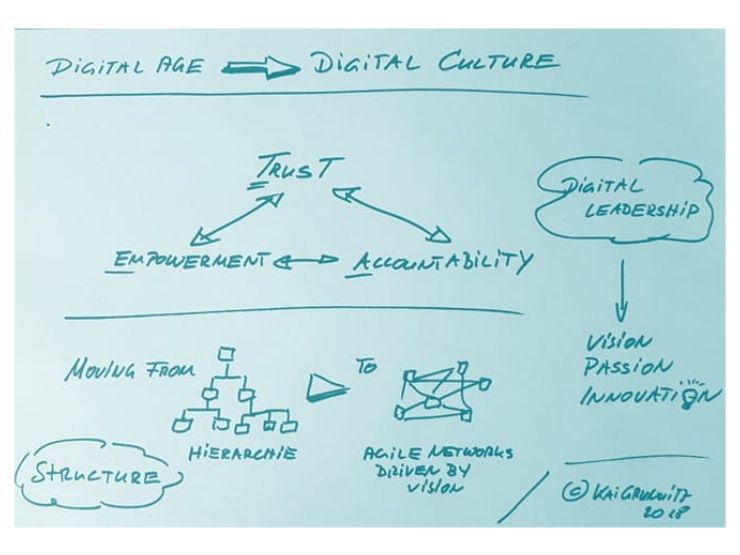-
Featured services
2026 Global AI Report: A Playbook for AI Leaders
Why AI strategy is your business strategy: The acceleration toward an AI-native state. Explore executive insights from AI leaders.
Access the playbook -
Services
View all services and productsLeverage our capabilities to accelerate your business transformation.
-
Services
Network Services
-
Services
Cloud
-
Services
Consulting
-
-
Services
Data and Artificial Intelligence
- AI and Intelligent Solutions
- Data/AI Strategy and Program
- Data Engineering and Platforms
- Data Governance and Management
- Data Visualization and Business Decision
- GenAI Consulting
- GenAI Platforms
- GenAI Industry Services
- GenAI Infrastructure Services
- GenAI Value Transformation
- View Data and Artificial Intelligence
-
Services
Infrastructure Solutions
-
Services
Global Data Centers
-
Services
CX and Digital Products
-
Services
Application Services
-
Services
Sustainability Services
-
Services
Digital Workplace
-
Services
Business Process Services
-
Services
Generative AI
-
Services
Cybersecurity
-
Services
Enterprise Application Platforms
![]()
Accelerate outcomes with agentic AI
Optimize workflows and get results with NTT DATA's Smart AI AgentTM Ecosystem
Create your roadmap -
-
-
Insights
Recent Insights
-
The Future of Networking in 2025 and Beyond
-
Using the cloud to cut costs needs the right approach
When organizations focus on transformation, a move to the cloud can deliver cost savings – but they often need expert advice to help them along their journey
-
Make zero trust security work for your organization
Make zero trust security work for your organization across hybrid work environments.
-
-
![]()
2026 Global AI Report: A Playbook for AI Leaders
Why AI strategy is your business strategy: The acceleration toward an AI-native state. Explore executive insights from AI leaders.
Access the playbook -
-
2026 Global AI Report: A Playbook for AI Leaders
Why AI strategy is your business strategy: The acceleration toward an AI-native state. Explore executive insights from AI leaders.
Access the playbook -
Discover how we accelerate your business transformation
-
About us
CLIENT STORIES
-
Liantis
Over time, Liantis – an established HR company in Belgium – had built up data islands and isolated solutions as part of their legacy system.
-
Randstad
We ensured that Randstad’s migration to Genesys Cloud CX had no impact on availability, ensuring an exceptional user experience for clients and talent.
-
-
CLIENT STORIES
-
Liantis
Over time, Liantis – an established HR company in Belgium – had built up data islands and isolated solutions as part of their legacy system.
-
Randstad
We ensured that Randstad’s migration to Genesys Cloud CX had no impact on availability, ensuring an exceptional user experience for clients and talent.
-
![]()
2026 Global AI Report: A Playbook for AI Leaders
Why AI strategy is your business strategy: The acceleration toward an AI-native state. Explore executive insights from AI leaders.
Access the playbook -
- Careers
Topics in this article
Digital transformation is everywhere. It’s powering the growth of smart cities and advances in clinical care, and it’s even being touted by politicians as the Holy Grail to social and economic advancement. Don’t get me wrong, this is no bad thing. However, we shouldn’t forget that on the flipside there are fundamental risks for many people – most notably of skills becoming outdated faster than ever before. Many employees therefore understandably fear the consequences of digitization and may feel they’re unable to adapt to this new digital transformation paradigm.
This presents modern business leaders with a very acute set of challenges. To overcome these, they will need a new style of leadership, and a new structure for their organizations that helps drive the right behavior in employees.
Focus on employees
Our staff are the most critical factor for successful digital transformation. Company bosses therefore have to ask themselves: what do I need to change to take everyone with me on this digital journey? Remember: digitization requires new ways of collaboration and a completely new business environment. We face a situation where the established management is working with highly skilled employees – often with far more subject matter and cross domain expertise than the current leadership. This means that reviewing and challenging traditional structures and culture is unavoidable. Modern employees’ needs have changed: today many have a strong desire for more control over their work and extensive collaboration. Modern companies like Google, Amazon and Tesla are now the role models for innovation and collaborative culture, as HP was some decades ago.
The big task for management is therefore to create a culture and leadership style to support autonomy, empowerment and active engagement. It is not enough merely to invest in innovative technologies to drive digital transformation. The ‘people first’ rule is more valid than ever before, meaning a change in leadership style and organizational structure is required to enable a more motivational and creative environment.
Some very smart people at the IMD in Lausanne wrote that what we are currently experiencing is not ‘digital transformation’ per se but a battle for digital survival. Companies who cannot adapt and change will in time disappear. Successful digital transformation – or digital adoption – is arguably the key to survival more than it is innovation. It starts with a change in culture and leadership.
Digital transformation in leadership
The three main pillars of successful digital leadership are trust, empowerment and accountability (TEA).
If you handle all three elements correctly, you will automatically stand a great chance of creating a culture of autonomy, creativity and self motivation. However, many companies are still bound to a traditional hierarchical structure where micromanagement is common, and employees are controlled instead of trusted. Yet you cannot evaluate how important a person is to the success of a company by hierarchy, only by their level of engagement. In a modern, digital company, people with the right knowledge and passion will be included in multiple projects and discussions – and others will seek their advice. This really requires the management to change its tune and follow a TEA approach.
If any one part of the TEA dynamic doesn’t work out for a digital champion, he or she will leave and find another company to satisfy their needs. If a manager delegates a task to an individual, for example, but then starts to micromanage – it creates frustration. Does my manager not trust me? Why has he or she assigned this task to me if I’m not allowed to do my job properly? This can end in a critical spiral that results in the loss of key talent essential to digital transformation. Management must honor the TEA approach 100%. It might sound easy, but it can be even easier for seasoned leaders to fall back into traditional ways of doing things.
The leader profile
Leaders also have to be strong and accept having brilliant people around them; often far more skilled than themselves. I can tell you from my own experience that this is always hard, but it is necessary. Embrace the fact that the manager must be more of a coach than a player, focused on putting the right team together. However, even more importantly, managers have to give their teams a clear vision and strategy.
Digital natives, innovators and change agents want to work with people passionate about the journey ahead. The TEA approach will only work if managers live what they preach – they must be authentic. The digital manager is part of the digital transformation and the spearhead for their teams. In short: the job profile has changed. The value of a leader is no longer measurable via the number of people in their reporting line. It’s in their ability to secure the survival of the company in the digital age.
Digital skills
Finally, let us return to your most important asset in the digital transformation journey: your employees. The right TEA leadership approach and organizational structure will certainly help to motivate and empower your brightest and best, and overcome resistance to digital change. Nevertheless, the rapid evolution of skills requirements will also demand a more proactive approach from business leaders and educational institutions.
Right-skilling is an important way to tap the potential in your workforce. Retraining can not only be a highly cost effective way to move talent into growing parts of the business, but it also nurtures employee loyalty and a stronger sense of collective endeavor. It does not end there: schools and universities must also adapt their own educational programs for digital natives, so that the next generation entering the workforce do so suitably skilled.
Eye catching technology might capture most of the headlines but, when it comes to successful digital transformation, it all boils down to investment in people. The sooner modern leaders change their approach to recognize this, the sooner they can drive lasting success.





